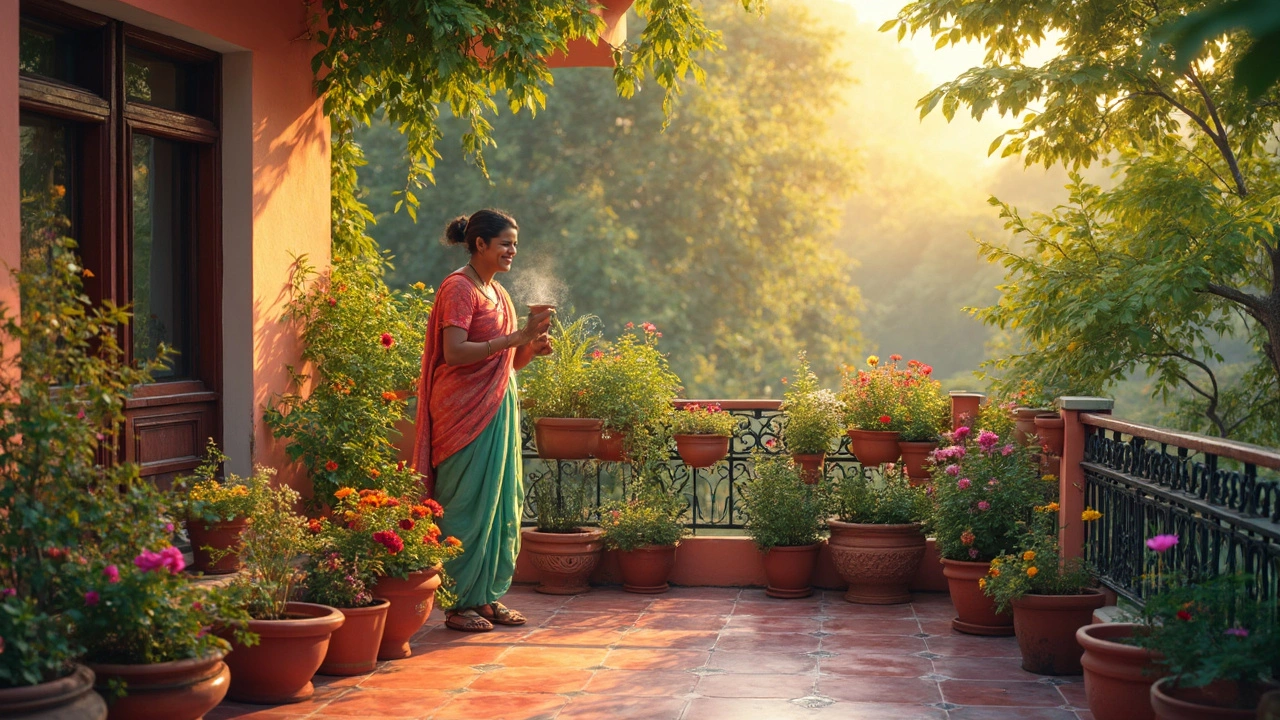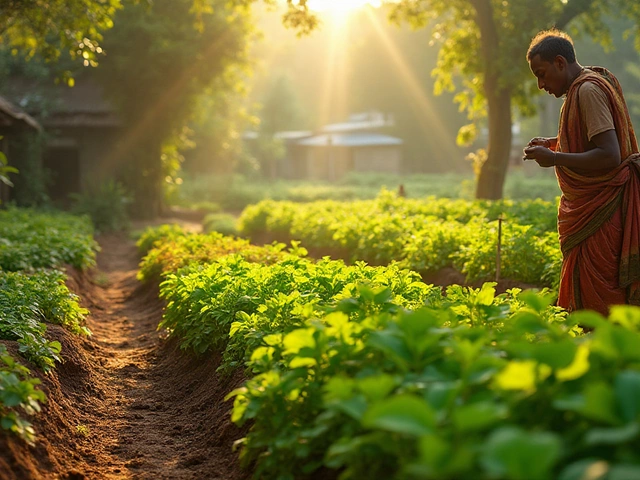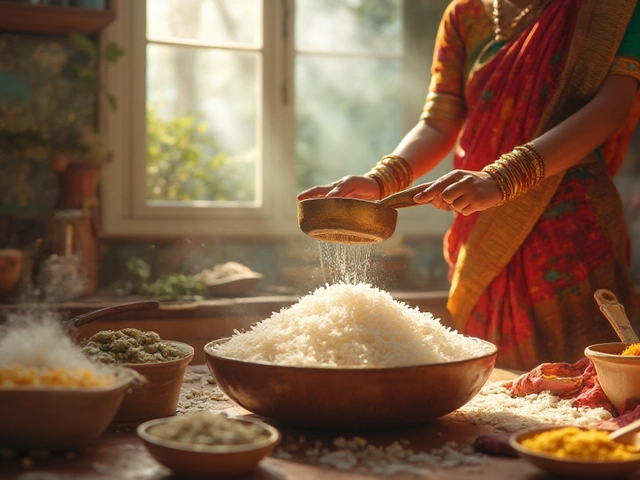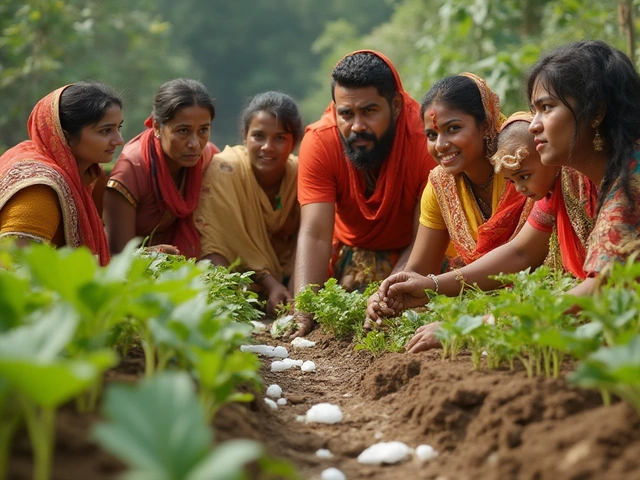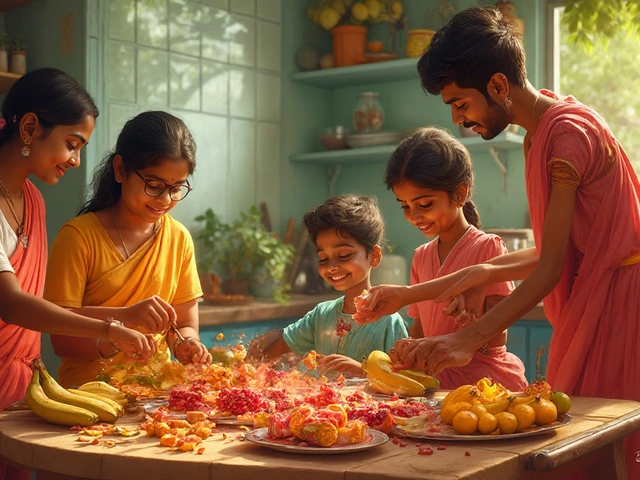Wouldn’t it be cool to always have something blooming outside your window, even when the weather is acting up? In India, a few plant varieties just don’t quit—they throw out flowers non-stop, from sweltering summer afternoons to breezy winter mornings. Sounds almost too good to be true, right? But some of these plants are practically made for lazy or busy gardeners who want a cheerful view, no matter what.
If you’re tired of waiting months for a few flowers, or you want your garden, balcony, or corridor to stay colourful every single month, some year-round flowering plants will have your back. No crazy green thumb skills needed—these little workhorses just need a bit of care, some sunlight, and they’ll brighten up your home. Ready to know what you can plant for flowers every season? Stick around, let’s get your own mini flower show started.
- Plants That Flower All Year in India
- How to Grow These Bloomers
- Practical Tips for Maximum Flowers
- Benefits and Clever Uses at Home
Plants That Flower All Year in India
Let’s get straight into the plants that just don’t take a break in India, pumping out flowers whether it’s dry, humid, or pouring rain. If you want a no-fuss, cheerful patch that impresses the neighbors (or just makes you smile after a long day), here are the big hitters you need to know about.
- Periwinkle (Vinca): This one’s the king of year-round flowering plants India searches. Give it sun, water now and then—bam, flowers every week. Vinca comes in pink, white, purple, and is pretty much pest-proof.
- Hibiscus: Super common in Indian yards and temples, these come in crazy shades and sizes. Snip them, and more blooms show up. Hibiscus also attracts butterflies, so your place gets even livelier.
- Ixora: Those bright, ball-shaped clusters you spot along Indian roadsides? Yep, that’s ixora. Red, yellow, orange—these stay happy in pots or right in the ground, and blossom like clockwork.
- Bougainvillea: You can practically ignore this one and it’ll still cover your wall in magenta or orange bursts. It takes direct sun and is drought-resistant. Just don’t overwater.
- Jasmine (Mogra): If you love having your balcony or entrance wafting with fragrance, mogra is your friend. With sunlight, they’ll offer white flowers year-round—plus, you can loop them through your fence or keep them in hanging pots.
- Marigold: Usually used for garlands and festivals, marigolds actually can give blooms month after month, especially in Indian climates with a little deadheading (removal of faded flowers).
Here’s a quick look at which all-season bloomers thrive in Indian weather, and what they’re famous for:
| Plant Name | Main Colors | Sunlight Needs | Good For |
|---|---|---|---|
| Vinca (Periwinkle) | Pink, White, Purple | Full Sun/Partial Shade | Pots, Borders, Balcony |
| Hibiscus | Red, Pink, Yellow, White | Full Sun | Garden Beds, Large Pots |
| Ixora | Red, Yellow, Orange | Full Sun | Hedges, Pots |
| Bougainvillea | Magenta, Orange, White | Full Sun | Walls, Terraces, Fences |
| Jasmine (Mogra) | White | Full Sun/Partial Sun | Balcony, Entrances |
| Marigold | Yellow, Orange | Full Sun | Beds, Planters |
Picking the right mix from this list depends on your space, how forgetful you might be with watering, and whether you want bright, bold shades or relaxing scented blooms. Any of these will keep your Indian home looking lively through all seasons.
How to Grow These Bloomers
Getting non-stop flowers isn't rocket science, but you need to watch a few basics. If you pick plants like hibiscus, bougainvillea, periwinkle, or lantana, you're already close to a year-round flowering plants India win. All these thrive in Indian weather, whether it’s hot, damp, or too dry.
Most of these tough bloomers are sun lovers, so find a spot with at least five to six hours of bright sunlight a day. In cities, sunny balconies or terraces work best. If you’re planting in the ground, choose well-draining soil. If it’s clay-heavy, mix in some sand, compost, or cocopeat to make it lighter. Potted plants need big enough containers with holes at the bottom—that keeps roots from rotting.
- Watering: Don’t drown them. Let the top inch of soil dry before watering again. Hibiscus loves damp soil, but bougainvillea hates too much water.
- Feeding: Every month, add a handful of compost or a mild liquid fertilizer. Avoid strong chemical stuff—these plants don’t need much.
- Pruning: Trim off dead or faded flowers whenever you spot them. For shrubby types like bougainvillea or lantana, cut back a bit after blooms fade. That signals the plant to make more flowers.
- Pests: Watch out for mealybugs or aphids. A simple blast of water or neem oil spray usually keeps them away.
Want to make things even easier? Mulch the soil with dried leaves or coconut husk. It keeps the roots cool and cuts down on watering. Also, rotate the pots every couple of weeks if your plants are leaning one way. Healthy, bushy plants get you more flowers, all through the year.

Practical Tips for Maximum Flowers
So, you want your garden to look like it's always in full swing? A few tweaks to your care routine will help you get those flowers non-stop. Here’s the real deal—the plants that bloom all year in India won’t do all the work themselves. They need smart care to actually pop out blooms month after month.
- Sunlight is king: Most year-round flowering plants like hibiscus, periwinkle, or bougainvillea need at least 5-6 hours of direct sunlight daily. No shortcuts here. If your spot is a bit shady, try moving pots around as the sunlight shifts during the day.
- Don’t let them starve: Use a balanced fertilizer (think NPK 10:10:10) once a month. If you’re planting in pots, liquid feed works fast. Sprinkle compost or old cow dung around the plants for extra oomph—local gardeners swear by it.
- Forget fancy watering schedules. Just stick your finger in the soil—if it feels dry, it’s time to water. Most year-round bloomers prefer soil that’s just damp, not soggy. Overwatering is a quick way to lose those buds.
- Trim like you mean it: Pinch off faded flowers and long, straggly branches every few weeks. This ‘deadheading’ keeps the plant focused on making new buds, not wasting energy on dying blooms.
- Pests love flowers just as much as you do. Watch for sticky leaves or odd spots—mealybugs and aphids love to snack on these plants. A blast of water or mild soapy spray usually keeps most bugs away. If you spot anything weird, act fast before it spreads.
Want fast results? Group your favorite bloomers together to create a mini ecosystem—flowers help protect each other from pests, and you get those burst-of-color patches everyone loves. Raise your pots a bit with bricks so air and water can drain well, especially during heavy rains.
If you’ve got pets around, like my dog Max who sometimes thinks flowerpots are his new playground, try placing hardy, pet-safe plants like marigolds at the edges. Keeps everyone happy and the blooms untouched.
Benefits and Clever Uses at Home
Year-round flowering plants aren't just for showing off. They work overtime to keep your home good-looking and can even help with your health and daily routines. For starters, these plants do a solid job cleaning up the air indoors. NASA’s studies show that plants like Peace Lily and Gerbera Daisy (both known for year-round blooms) can remove toxins like benzene and formaldehyde from the air. That’s something air purifiers would charge you for!
Adding these flowers around your home doesn't just make things look nice. Researchers at Rutgers found that people who see flowers regularly tend to feel happier and less stressed. Imagine walking into your balcony every morning to see colourful blooms—even Max, my dog, perks up around them (probably hoping for a butterfly chase).
These plants are also handy for:
- year-round flowering plants India in balcony pots or at your entryway for instant curb appeal
- natural insect control—marigolds and chrysanthemums can actually keep mosquitoes and plant pests away
- bundling up pretty homegrown bouquets for birthdays or last-minute guest visits
- filling empty corners indoors with peace lilies or anthuriums to jazz up the décor
- teaching kids about plant care and patience (since they’ll see results every week)
If you’re a numbers person, check out this quick comparison table that breaks down how some popular all-season bloomers pull their weight at home:
| Plant Name | Flowering Months | Extra Perks |
|---|---|---|
| Ixora | 12 (All Year) | Attracts butterflies, handles pollution |
| Jasmine | 12 (All Year) | Everyday fragrance, mosquito repellent |
| Hibiscus | 12 (All Year) | Medicinal uses, easy to grow in pots |
| Marigold | 12 (All Year) | Natural pest control, used in festivals |
| Anthurium | 12 (All Year if cared well) | Great for indoor air, sleek modern look |
One more tip: growing these plants means you’ll always have free access to fresh flowers for your own morning pooja or whenever you're in the mood to jazz up the dining table for dinner—or impress your mom on video calls. Add a few and you’ll quickly see how easy it is to make your space brighter and even a bit healthier.
